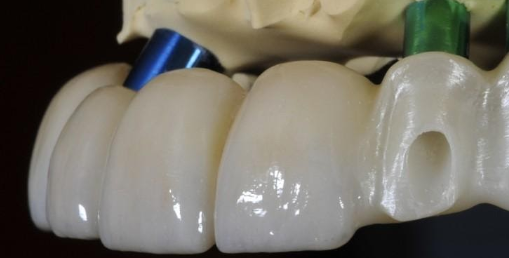Reliability of zirconia restorations
Zirconia has revolutionized dental restoration as one of the fastest procedural transformations in the history of modern dentistry.
Since zirconia’s first application as a dentistry implant, it has become clear that this smooth, durable and spotless material has a bright future in dental restorations.
As of today, dentists all over the world are choosing dental zirconia over traditional porcelain and acrylic materials — and for good reason. Zirconia is proving to have all the desired effects of a dentistry implant and has become the select choice in restorations that include dental crowns, dentures and bridges.
Zirconia is a fully biocompatible material and poses no harm or risk of complications when exposed to living tissue for long periods of time. It is perfectly safe and maintains a smooth surface throughout its lifespan, preventing any irritation or abrasion of surrounding tissue or teeth.
As the hardest known ceramic available, zirconia is an ideal choice for dental restoration. It is the strongest material used by dentists and many claim that a zirconia dental implant will last a lifetime. This claim is backed by laboratory testing which showed zirconia to bend at a 200 percent higher pressure than porcelain. In practical terms, this makes it resistant to chipping and cracking, leaving zirconia capable of withstanding many years of biting, chewing, speaking as well as exposure to abrasive foods and liquids.
When compared to zirconia, porcelain and other traditional ceramics are unable to match its level of durability. Under normal conditions of wear-and-tear, these materials eventually deteriorate and compromise the dental restoration structure. This leads to the necessity of repairs or replacement to maintain the shape and quality of the implant, making zirconia an economically wise decision.
Dental zirconia is a non-porous material and boasts stain-resistant properties for a consistent, unblemished look that is guaranteed to last many years. It is designed to have an extremely natural appearance thanks to an improved microstructure which creates a translucency similar to that of real teeth. Light reflected from zirconia is intended to match that of surrounding teeth, leaving zirconia teeth and implants virtually indistinguishable from the real ones. Custom coloration techniques further blend zirconia restorations with surrounding teeth for a fully natural and lifelike appearance.
Another quality of dental zirconia is its uniform composition as a fully solid and independent
dental restoration material. There is no need for metal substructures that are often used as a base for porcelain in order to increase its durability and strength. As zirconia is optimally durable on its own, it can be implanted independently of any other material. This prevents subsurface discoloration that is a common trait of materials that are fused with metallic reinforcement.
Zirconia has created an attractive and enduring alternative to traditional dental restoration that was not available before. It is quickly becoming the foremost restoration technique for patients and dentists all over the world.



